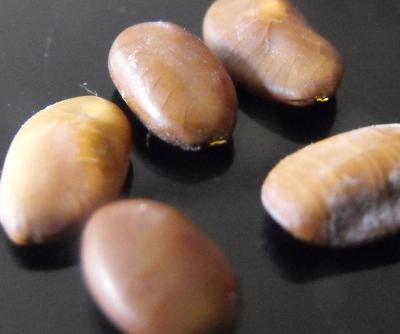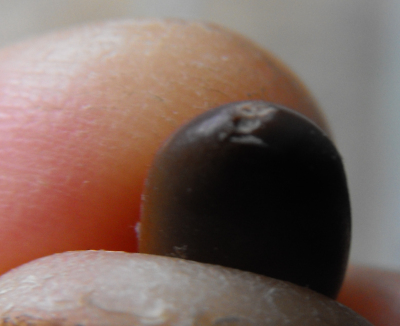
How to stratify and scarify seeds
 Most vegetable and annual flower seeds are
pretty easy to grow --- just throw them in the ground at something
close to the right depth at the right time of year and they sprout just
fine. When you start trying to plant tree, shrub, and perennial
herb seeds, though, propagation techniques often get a bit more
tricky. I always stumble when I'm told to scarify or stratify
seeds, but both techniques are actually quite easy, as I discovered
when I started looking up information about growing honey locusts
and persimmons from seed.
Most vegetable and annual flower seeds are
pretty easy to grow --- just throw them in the ground at something
close to the right depth at the right time of year and they sprout just
fine. When you start trying to plant tree, shrub, and perennial
herb seeds, though, propagation techniques often get a bit more
tricky. I always stumble when I'm told to scarify or stratify
seeds, but both techniques are actually quite easy, as I discovered
when I started looking up information about growing honey locusts
and persimmons from seed.
Persimmon seeds need to be stratified before they will germinate.
People try to make stratification more difficult than it actually is,
telling you to put the seeds in a pot of dirt or in a ziploc bag with a
wet paper towel and leave them in the fridge for a certain length of
time. In practice, I've discovered that native plants have
evolved to stratify quite nicely in the garden. Just plant the
seeds in the fall and they'll be exposed to plenty of cool temperatures
and will germinate as usual in the spring. I tried this with
persimmons a few years ago with good success and am trying again this
year.
 Honey locust seeds, on the other hand, need
scarification to germinate. The problem is that many seeds
evolved to be eaten by animals and to pass through the gut relatively
unharmed. Seeds need thick coatings to survive the stomach acids,
but these thick coatings are often impenetrable to water, meaning that
your seed won't sprout unless it's scarified. The natural way to
scarify seeds is to pass them through some animal's stomach and let the
acids break partway through the seed coating. Barring a handy
animal, people will drop the seeds in a vat of acid or hot water, or
will manually damage the seed coat (hopefully without damaging the seed
inside.) I tried to file my honey locust seeds with no luck, and
instead ended up snipping through the edge of the seed coat with
fingernail scissors. This is my first attempt at scarification,
so I'm very curious to see whether it works!
Honey locust seeds, on the other hand, need
scarification to germinate. The problem is that many seeds
evolved to be eaten by animals and to pass through the gut relatively
unharmed. Seeds need thick coatings to survive the stomach acids,
but these thick coatings are often impenetrable to water, meaning that
your seed won't sprout unless it's scarified. The natural way to
scarify seeds is to pass them through some animal's stomach and let the
acids break partway through the seed coating. Barring a handy
animal, people will drop the seeds in a vat of acid or hot water, or
will manually damage the seed coat (hopefully without damaging the seed
inside.) I tried to file my honey locust seeds with no luck, and
instead ended up snipping through the edge of the seed coat with
fingernail scissors. This is my first attempt at scarification,
so I'm very curious to see whether it works!
Want more in-depth information? Browse through our books.
Or explore more posts by date or by subject.
About us: Anna Hess and Mark Hamilton spent over a decade living self-sufficiently in the mountains of Virginia before moving north to start over from scratch in the foothills of Ohio. They've experimented with permaculture, no-till gardening, trailersteading, home-based microbusinesses and much more, writing about their adventures in both blogs and books.
Want to be notified when new comments are posted on this page? Click on the RSS button after you add a comment to subscribe to the comment feed, or simply check the box beside "email replies to me" while writing your comment.
- Remove comment
- Remove comment
- Remove comment
- Remove comment
- Remove comment
- Remove comment
- Remove comment
- Remove comment
